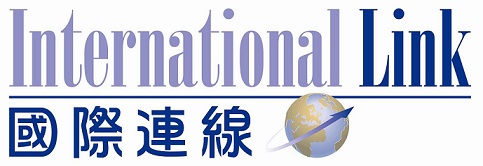Laselec
法國拉塞萊克公司推出一種為鋁質電纜列印標記的新工藝
Laselec unveils new laser marking process for aluminium wire
法國拉塞萊克公司(Laselec)剛剛開發成功一種特別的工藝,專為鋁質電纜列印標記。這種新的技術是應空中客車公司(Airbus)的要求開發的,實際上是一種採用鐳射預先列印點狀標記的工藝。鋁質電纜的特點是具有密封的接頭,而且接頭處沒有開口,無法在列印標記後檢查列印工作是否正常。因此列印過程中需要極高的精度為列印點定位。對於拉塞萊克公司來說,這是一個真正的挑戰,而用鐳射列印電纜標記正是該公司的專長!
目前,減少重量成了飛機製造業的優先目標之一。為了滿足這個要求,在新一代的飛機製造當中,大量引入了鋁質的電纜。在一架A380飛機上,有五百多公里各種性能的電纜,而且每個電纜的區段都要帶有識別標記,以方便維修。在空中客車公司的要求之下,拉塞萊克(該公司一九八九年開發了第一套紫外線鐳射電纜標記列印和識別系統)開發了專門的鋁質電纜標記列印工藝。更準確地說,這是一種鐳射先期列印工藝。鐳射列印點需要進行高精度的定位,以保證接頭觸點的嵌裝安全。更重要的是,在這一類的電纜上,接頭觸點是密封的,沒有供後期檢查列印工作是否正常的開口。
目前,電纜使用「氈筆」式的標記印表機列印標記,以檢查列印工作是否正常。拉塞萊克公司的董事長總經理艾裡克‧迪蓬(Eric Dupont)說:「這種手工操作方法的主要缺點是,列印的字元不明確,而且列印出來的標記不是永久性的。所以在嵌裝接頭之後,根本無法進行後期的檢查。鐳射光點標記的預先列印採用高精度的定位,彌補了這一缺陷,因此而保證了接頭嵌接作業的安全性。」
空中客車和拉塞萊克兩間公司為這種工藝註冊了多個專利;今天這種工藝已經得到驗證,不久將在航空電纜製造業推廣採用。採用鐳射列印電纜的標記可以保證標記不會消退,而且對電纜的絕緣沒有腐蝕性,在電纜標記列印領域是一個真正的突破。這項技術在民用和軍用工業計劃當中得到廣泛採納,成為很多領域中的指定技術,尤其是在車輛上,不管是工業車輛還是高檔的汽車、賽車、拉力賽車等等。ULYS Modena系列的標記印表機是可以隨着技術發展而升級的,完全可以滿足所有這些需求。這個系列中的基本類型ULYS 110用於小批量電纜的標記列印,可以根據需求進行調整,列印能力可以一直提高到裝備有兩台雷射印表機,在生產效率上至今無可比擬的ULYS 990。拉塞萊克公司還開發了MRO 200,以滿足航空器維修、改造和修理中心的特殊要求。Ulys Modena 和 MRO 200是由PC電腦控制的,生產完全自動化,使用簡單,生產效率高。
拉塞萊克公司還設計了一台樣品測試機MT 200,以測試正在開發過程中的電纜是否適應紫外線鐳射標記列印,並定期檢查電纜的生產。新的EN 4650標準重申製造廠商對電纜的組成成份負有責任,電纜的技術特性在經過鐳射的標記列印之後,應保持不變。在這種情況之下,MT 200就更顯示出是一種必不可少的工具,以檢查使用者採用鐳射照射之後,標記的反差水準是否符合規格。COMET系統是對這一設備的又一個補充,因為採用該系統可以檢查列印標記的顏色反差。該系統的軟體通過一台數位式的攝像機和一套對樣品施以光照的雙光纖系統,即時地分析樣品的列印標記。
關於拉塞萊克公司:
拉塞萊克公司的電纜標記列印設備為全世界主要的航空器製造廠所採用:阿古斯塔-韋斯特蘭(Agusta Westland)、空中客車公司、BAE系統公司、貝爾直升機公司、波音公司、龐巴迪航空航太公司、塞斯納航空器公司、昌河航空器公司、歐洲宇航防務集團、巴西航空工業公司(Embraer)、歐洲直升機公司、灣流宇航公司(Gulfstream Aerospace)、印度斯坦航空有限公司、美國豪客比奇公司(Hawker Beechcraft)、本田航空器公司、I.A.I. 、米格飛機公司、西科斯基全球直升機公司(Sikorsky Global Helicopters)、上海航空器適航審定中心。
公司超過百分之八十的營業額都是來自國際上的業務,所以在二零一一年的重點是在亞洲和美國市場。
公司自從二零零四年以來在印度立足,為印度最大的產品訂購方提供裝備,其中包括印度斯坦航空有限公司。今年拉塞萊克公司將在亞洲太平洋地區設立一個新的機構,並在「客戶服務站」建立配件貯備,「客戶服務站」設在距離主要的用戶不遠的地方。
拉塞萊克公司在美國立足已穩,使美國的客戶受益於高品質的產品和客戶支援服務。該公司在美國的客戶支援服務中心設在達拉斯。今年,拉塞萊克的美國團隊將參加四個專業展覽會。
詳情請瀏覽該公司網站: www.laselec.com
--------------------------------------------------------------------------
Laselec has developed a marking process specially designed for aluminium wire. Produced at the request of international aerospace group Airbus, this novel process, which has resulted in the lodging of several patents, involves pre-marking spots with laser. A high degree of precision is required in order to position the dots: this was a challenge for Laselec, which the specialist in laser wire marking managed to overcome.
In order to meet current weight-reduction constraints, aluminium wire is being used extensively and increasingly in the latest generation of aircraft. To give an idea of the significance of the issue, an A380 aircraft, manufactured by Airbus, requires over 500km of wires and cables of various kinds, and each section must be clearly identified in order to facilitate maintenance.
Further to requests from Airbus, Laselec has designed and developed a specific process for the marking of aluminium cables that is perfectly adapted to their characteristics. Laselec has a proven track record in the field, having successfully developed the first-ever system for stamping and identifying cables with the help of UV-laser technology, as early as 1989.
The latest technology developed by Laselec consists in a pre-marking of the spots by laser. The spots need to be positioned with the utmost precision in order to guarantee the safety of the crimping process. The key issue is that, on this type of aluminium cables, the contact points are totally leak-proof, without any openings that would enable the operator to check, by the end of the process, that the operation has indeed been carried out correctly.
At present, cabling companies use ‘felt-tip’ markers. As Eric Dupont, CEO of Laselec, explains: "The main disadvantage of this manual method stems from the imprecise and non-permanent nature of the resulting markings, which precludes any verification, after the event, of the crimping operation. Pre-marking the cables with laser-printed dots that are positioned with great precision solves these problems and, thus, guarantees the security of the operation.”
The novel process for the marking of aluminium wires, which has resulted in the lodging of several patents by Airbus and Laselec, has been approved, and should shortly be deployed by wiring and cabling companies across the aerospace industry.
The use of a laser system guaranteeing a permanent marking solution that does not damage the insulator represents a genuine technological breakthrough in the cable and wire marking sector. Widely used in both civilian and military programmes, this technique has proved very successful in various sectors. This is particularly true of the automotive industry, for top-of-the-range, competition and rally vehicles.
The models available in the ULYS Modena range, developed by Laselec, are upgradeable, enabling the end-user to meet all marking requirements. Designed for low-volume production sites, the basic ULYS 110 units can be adapted to achieve the unrivalled productivity levels offered by the ULYS 990, which is equipped with two lasers. The MRO 200, for its part, has been developed by Laselec to meet the specific requirements of aircraft maintenance, modification and repair centres. ULYS Modena and MRO 200 are computer-controlled and fully automated, which makes them easy to use and guarantees a high level of productivity.
Laselec has also designed a sample tester, the MT 200, in order to verify the UV markability of cable and wire types currently under development, and to carry out periodical inspections of the cables (or wires) during production. The new EN 4650 standard underlines the manufacturer’s responsibility for the composition of wires and their various characteristics, which must remain unchanged after undergoing laser marking.
More than ever before, the MT 200 is emerging as a vital tool for verifying the suitability of the contrast level under the laser irradiation conditions applied by the users. The COMET system completes this range of equipment, offering the possibility to check the contrast of the markings once they have been applied. The software integrated into the COMET system performs the real-time analysis of the data obtained from a digital camera and a dual optical-fibre sample lighting system.
Laselec’s cable and wire marking equipment is widely used by the world’s leading aircraft manufacturers, including Agusta Westland, Airbus, BAE Systems, Bell Helicopters, Boeing, Bombardier Aerospace, Cessna Aircraft, Changhe Aircraft, EADS, Embraer, Eurocopter, Gulfstream Aerospace, HAL, Hawker Beechcraft, Honda Aircraft, IAI, MIG, Sikorsky Global Helicopters, Shanghai Aircraft, and Tusas Aerospace.
About Laselec
With over 80% of its turnover generated internationally, Laselec is focusing extensively on Asia and on the American market in 2011.
Laselec has been represented in India since 2004, and equips some of the largest Indian prime manufacturers, including HAL. A new site will be set up in the Asia-Pacific region this year, with stocks of spare parts stored in ‘service stations’ strategically located within easy reach of the main users.
Laselec is well-established on the American continent, where the company provides its clients with high-quality products and customer service from its main facility in Dallas (Texas). Laselec’s US team will be attending four trade shows in 2011.
The latest products and technologies developed by Laselec will be showcased at the following trade shows in 2011: from 9 to 13 February, at AERO INDIA in Bangalore (India); from 5 to 8 March, at HELI EXPO in Orlando, Florida (USA); from 17 to 20 April, at the Army Aviation Association of America/Quad-A in Nashville, Tennessee (USA); from 10 to 11 May, at a trade event held at Thai Airways Technical Department (Thailand); from 18 to 19 May, at the Wire Processing Expo in Milwaukee, Wisconsin (USA); from 20 to 26 June at the Paris Air Show in Le Bourget, north of Paris (France); and, finally, from 10 to 12 October, at the NBAA in Las Vegas, Nevada (USA) .
For further information about Laselec, please go to: www.laselec.com





